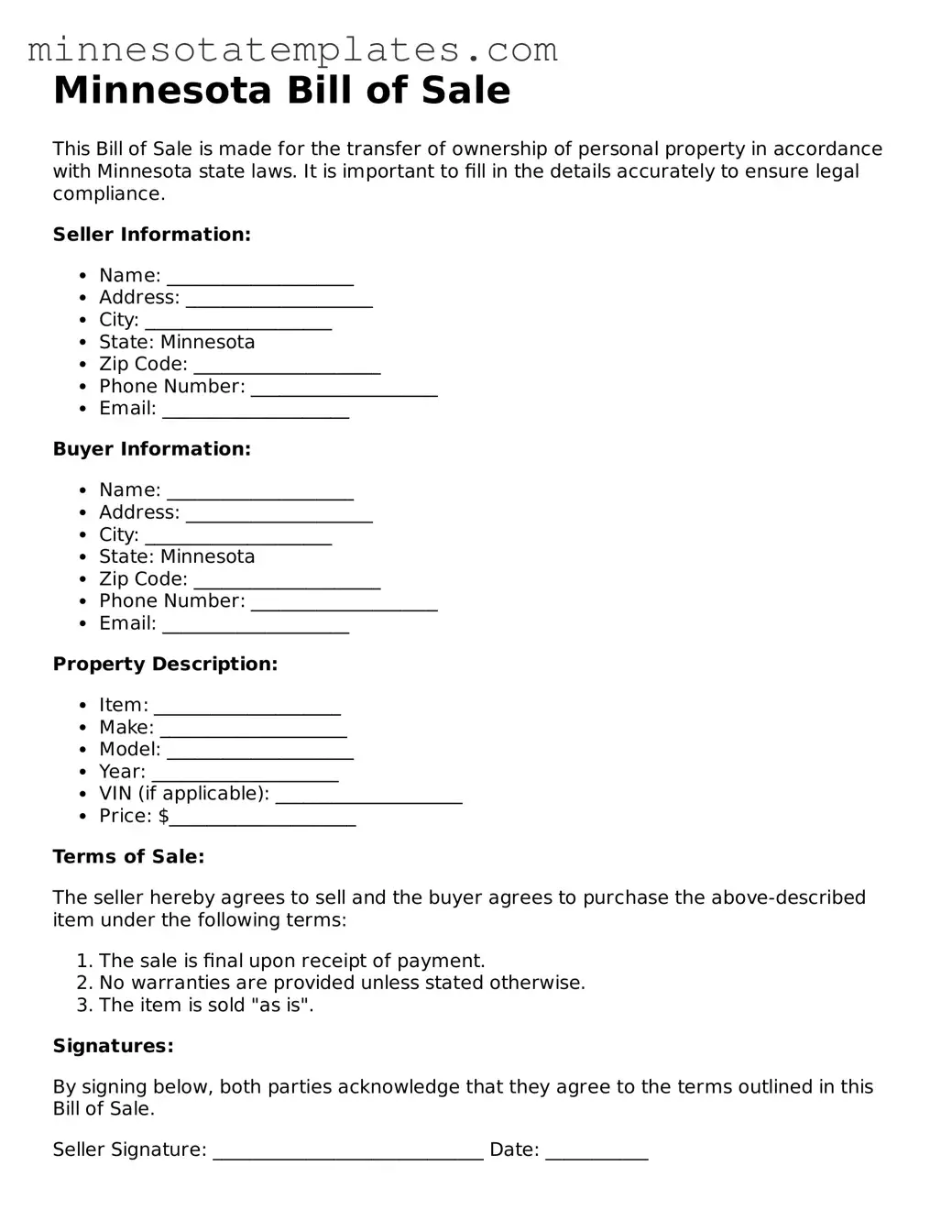Valid Bill of Sale Form for the State of Minnesota
The Minnesota Bill of Sale is a legal document that serves as proof of the transfer of ownership for personal property from one party to another. This form is essential for both buyers and sellers, as it provides important details about the transaction, including the description of the item and the purchase price. To ensure a smooth transfer of ownership, consider filling out the Minnesota Bill of Sale form by clicking the button below.
Access Your Form Now
